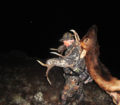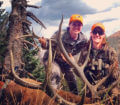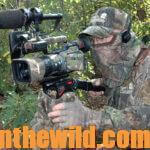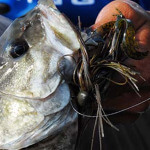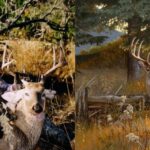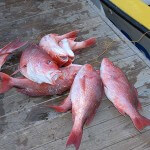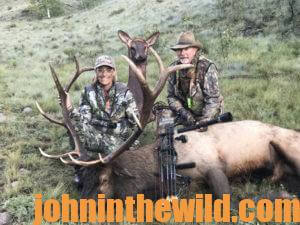 Editor’s Note: Donnelle Johnson of Franktown, Colorado, is an elk-hunting fanatic and has been hunting elk since 1998. When she’s not hunting and calling in elk for herself, she goes with friends and family members and calls in bulls for them. “I just love to be in the woods hunting, calling and trying to outsmart Colorado bull elk on public lands,” Johnson says. “My husband, David Johnson, and I moved to Colorado then. Dave started going elk hunting with his boss in 1991. For the next 5 years, they’d hunt together. In 1997, I went on my first elk hunt with Dave, and we went to the place where Dave’s boss always had taken him to hunt elk. I chased cows around, trying to get a shot with my bow, even though I had a tag that would allow me take a bull or a cow. From Dave’s experience, we founded our company called Hunt Data (http://www.huntdata.com/).”
Editor’s Note: Donnelle Johnson of Franktown, Colorado, is an elk-hunting fanatic and has been hunting elk since 1998. When she’s not hunting and calling in elk for herself, she goes with friends and family members and calls in bulls for them. “I just love to be in the woods hunting, calling and trying to outsmart Colorado bull elk on public lands,” Johnson says. “My husband, David Johnson, and I moved to Colorado then. Dave started going elk hunting with his boss in 1991. For the next 5 years, they’d hunt together. In 1997, I went on my first elk hunt with Dave, and we went to the place where Dave’s boss always had taken him to hunt elk. I chased cows around, trying to get a shot with my bow, even though I had a tag that would allow me take a bull or a cow. From Dave’s experience, we founded our company called Hunt Data (http://www.huntdata.com/).” 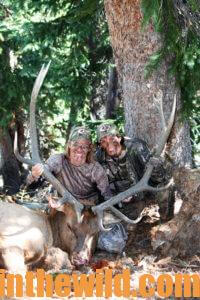
Dave and I almost became obsessed with gathering hunting information and trying to help do-it-yourself hunters increase their odds for success. Then a couple of years ago we added harvest sites for goat, sheep, moose and mountain lions with specific recommendations of where your chances were best to take these animals in our database – 13,000+ kill sites. HuntData offers maps of public and private lands on tear-resistant waterproof paper with UV ink overlays to show where the largest concentration of elk are in each unit, and where the public land is available in each unit. The Land Ownership Maps identify private and public lands, including state lands, national forests and wilderness and federal lands with roads and trail systems. The habitat concentration maps identify summer and winter ranges and migration routes. HuntData maps are available today for Arizona, Colorado, Utah, Wyoming, California, Washington and Oregon.
Working with the data we were collecting, I discovered I could plan a very-inexpensive elk hunt. I wouldn’t need to hire a guide, and I wouldn’t have to hunt private land. Over the last 15+ years, my family and friends I guided saw elk 95 percent of the time we hunted and harvested elk 50 to 65 percent of the time on those hunts. I use the HuntData information to hunt smarter, hunt cheaper and become more successful. Today and each year, I look at the preference points that I have for each unit that I may want to hunt and the time of year that I want to hunt. Then I find the units holding the most elk during the time I want to hunt with the preference points I’ve accumulated and learn the amount of public lands I’ll have to hunt. So, I rely less on luck and more on technology to find better 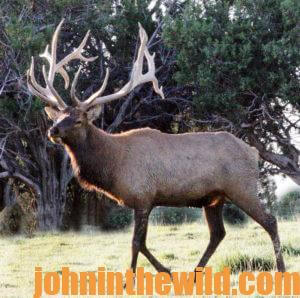 elk hunting for me, my friends and my family. I define a blue-collar elk hunter as a person who studies all the research he or she can find about where he wants to hunt, goes to his or her hunt site several days before the season and sets-up a tent camp. Then he scouts and uses his woodsmanship and the technology available to locate and harvest the type of elk he’s come to hunt. The blue-collar hunter doesn’t hire a guide who has all the equipment set-up when he gets to camp and does all the guiding to find the elk.
elk hunting for me, my friends and my family. I define a blue-collar elk hunter as a person who studies all the research he or she can find about where he wants to hunt, goes to his or her hunt site several days before the season and sets-up a tent camp. Then he scouts and uses his woodsmanship and the technology available to locate and harvest the type of elk he’s come to hunt. The blue-collar hunter doesn’t hire a guide who has all the equipment set-up when he gets to camp and does all the guiding to find the elk.
Dave and I want to be as efficient as we can be at finding and taking elk, because wild game is the meat that our family prefers. Elk is a major staple in our diet. Eating wild meat is the healthiest and the most-natural meat people can eat, because it hasn’t been fed steroids or injected with any outside substances. That’s why I have no hesitation in taking a cow when I’m elk hunting. Personally, I’ve only harvested three bulls. However, I’ve called in 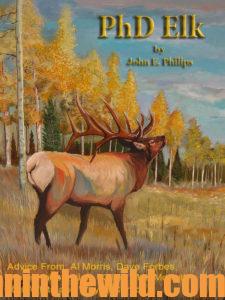 30+ bulls that have been harvested by family members and friends. I just love to hunt and call elk, and I want to go hunting every chance I get. Who takes the bull isn’t nearly as important to me as getting that bull into a position where he can be harvested.
30+ bulls that have been harvested by family members and friends. I just love to hunt and call elk, and I want to go hunting every chance I get. Who takes the bull isn’t nearly as important to me as getting that bull into a position where he can be harvested.
A couple of years ago, my hunting partner, Lisa Thompson, and I hunted 10-different elk units in Colorado that we never had hunted previously. We wore Fitbits (https://www.fitbit.com/) that recorded the number of miles we traveled. At the end of the season, we had logged 250 miles of walking during those 10 hunts. On 7 of those 10 hunts, we got within 100 yards of a branched, antlered bull. However, we’re both bowhunters. Even though we saw those bulls, they weren’t within bow range.
To learn more about elk hunting, check out John E. Phillips’ book, ‘PHD Elk: How to Hunt the Smartest Elk in Any State,’ available in Kindle, at http://amzn.to/WkbAWa
Tomorrow: How to Make a Lousy Elk Season Become a Great Elk Season

